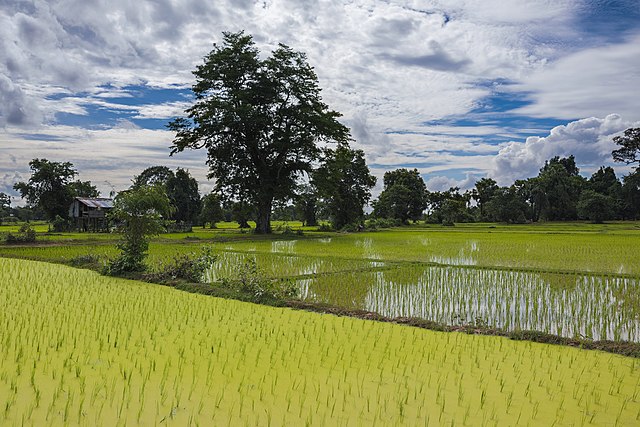
Thammasat University students interested in economics, development studies, technology for development, engineering innovation, social innovation, social entrepreneurship, global engineering, anti-poverty technologies; humanitarian engineering, information and communication technology for development, sustainable engineering, and related subjects may find a new book useful.
Introduction to Development Engineering: A Framework with Applications from the Field is an Open Access book available for free download at this link:
https://link.springer.com/book/10.1007/978-3-030-86065-3
The Thammasat University Library collection includes several books about different aspects of development studies.
It is edited by, among others, Temina Madon, PhD. Executive Director Center of Evaluation for Global Action Center for Emerging and Neglected Diseases University of California, Berkeley, the United States of America.

The publisher’s description notes:
This open access textbook introduces the emerging field of Development Engineering and its constituent theories, methods, and applications. It is both a teaching text for students and a resource for researchers and practitioners engaged in the design and scaling of technologies for low-resource communities. The scope is broad, ranging from the development of mobile applications for low-literacy users to hardware and software solutions for providing electricity and water in remote settings.
It is also highly interdisciplinary, drawing on methods and theory from the social sciences as well as engineering and the natural sciences. The opening section reviews the history of “technology-for-development” research, and presents a framework that formalizes this body of work and begins its transformation into an academic discipline. It identifies common challenges in development and explains the book’s iterative approach of “innovation, implementation, evaluation, adaptation.”
Each of the next six thematic sections focuses on a different sector: energy and environment; market performance; education and labor; water, sanitation and health; digital governance; and connectivity. These thematic sections contain case studies from landmark research that directly integrates engineering innovation with technically rigorous methods from the social sciences.
Each case study describes the design, evaluation, and/or scaling of a technology in the field and follows a single form, with common elements and discussion questions, to create continuity and pedagogical consistency. Together, they highlight successful solutions to development challenges, while also analyzing the rarely discussed failures.
The book concludes by reiterating the core principles of development engineering illustrated in the case studies, highlighting common challenges that engineers and scientists will face in designing technology interventions that sustainably accelerate economic development. Development Engineering provides, for the first time, a coherent intellectual framework for attacking the challenges of poverty and global climate change through the design of better technologies.
It offers the rigorous discipline needed to channel the energy of a new generation of scientists and engineers toward advancing social justice and improved living conditions in low-resource communities around the world.

The book’s Preface states:
Development Engineering explores the design of technological solutions that can rapidly accelerate life outcomes for people in poverty – particularly for those who struggle most – without disruptive impacts on biodiversity and the environment.
This textbook serves as an introduction to the nascent field, which sits at an intersection of development economics and engineering. The scope of the textbook is broad, ranging from mobile services for lowliteracy users, to hardware solutions that bring clean water and electricity to remote environments.
It is also highly interdisciplinary, drawing on methods and theory from political science and psychology as well as engineering and computer science. The book’s diverse subject matter is woven together by a set of common challenges that engineers and scientists face in designing technologies to accelerate the development of disadvantaged communities.
These challenges include market failures (like high transport costs and financial exclusion) as well as institutional weaknesses (like poor regulatory capacity or corruption). These forces commonly prevent even promising technologies from improving welfare at any meaningful scale.
The book also considers the behavioral and social constraints facing communities, including the heavy burden of stress and anxiety among those living in poverty. How can researchers learn to design around these constraints? The opening part of this book offers a history of “technology-for-development” and an overview of the channels through which technological innovations can influence economic development.
This is followed by a practical framework for research that helps transform a vast multi-disciplinary field into a tractable practice. This framework consists of four interlinked activities: innovation, iterative implementation, evaluation, and adaptation for scale. The remainder of the textbook consists of six thematic parts, each focused on a different sector: energy and resources; agricultural markets; education and jobs; water, sanitation, and health; governance; and connectivity.
Each part contains multiple case studies describing landmark research that has influenced the field of development engineering. The case studies demonstrate the practical framework for research, analyze the researchers’ pivots and failures, and incorporate theories and concepts relevant to each specific sector.
This book has prioritized research that directly integrates engineering innovation with technically rigorous methods from the social sciences, such as randomized evaluation. This is the essence of the new field of “development engineering,” which connects insights from development economics and related disciplines with engineering in order to promote impact at scale.
The intended audience for this book includes students, faculty, and other researchers involved in the design, use, and evaluation of technologies that sustainably accelerate development. It is also written for development practitioners (e.g., engineers, service providers, and technocrats) who work in low- and middle income countries.
Our motivation in writing this book is to help define a discipline for those working on technology-for-development. For several decades, the field has been dominated by practice (e.g., programs like “Engineers without Borders”), emphasizing service learning in the absence of theory and empirical research. This text attempts to provide a coherent intellectual framework for addressing the challenges of poverty through the design and scaling of better technologies.
The book is inspired by the lessons learned from a multi-year, $30 million investment in development engineering by the U.S. Agency for International Development. This investment, made through an award to the University of California, has supported more than 100 pilot and large-scale research projects in 30 countries, all focused on technologies for low-income communities.
We feel that the text is particularly timely given the increasing emphasis in universities (and in business) on social innovation and social entrepreneurship. New generations of young scientists and engineers are interested in careers that advance social welfare, tackle inequality, and directly address climate change. They are passionate about improving living conditions for people at the base of the economic pyramid.
However, there is a need for a rigorous discipline to help channel this energy and ground it in an understanding of complex economic, political, and social systems. We aim to fill this gap with An Introduction to Development Engineering.

(All images courtesy of Wikimedia Commons)
